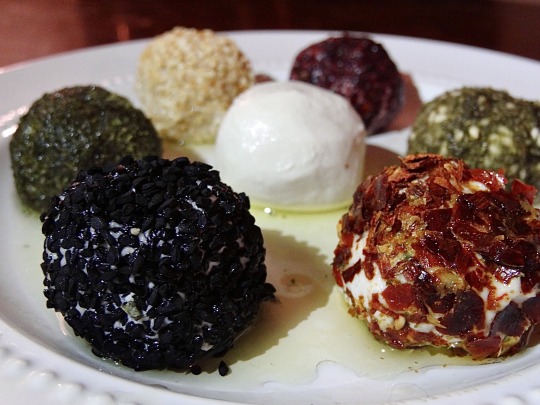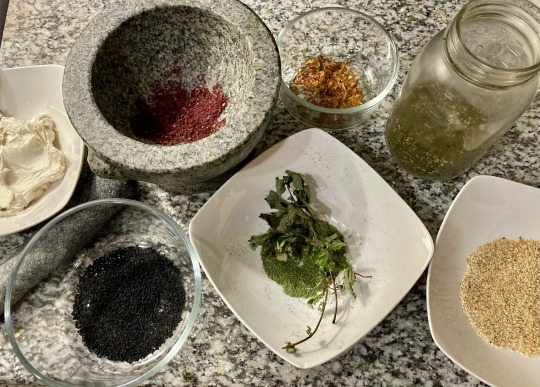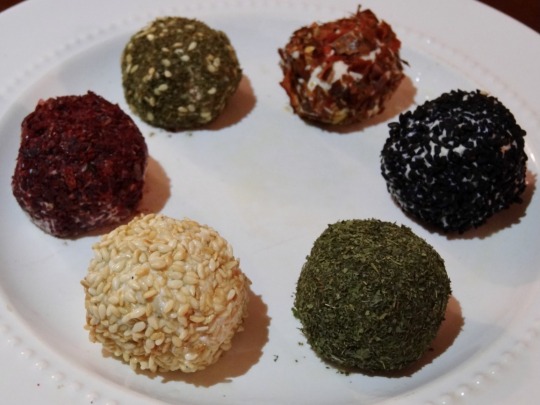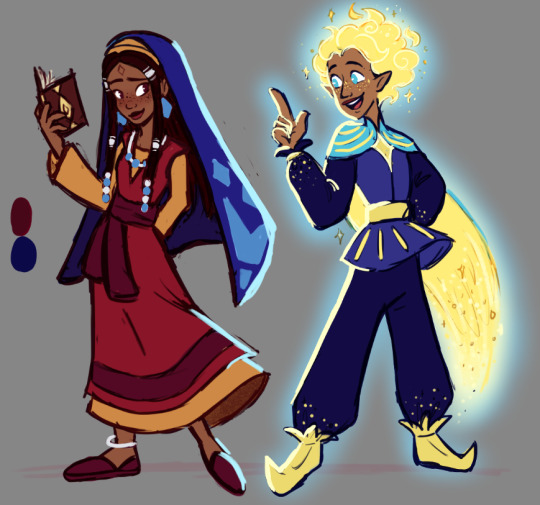#mamoun
Explore tagged Tumblr posts
Text
Aaaah sorry I just saw this
Thank you so much!!!! Mamoun looks so good and I love your designs for all the moth kids! (Especially the one in the bottom right corner that's my absolute favorite they're ready to GO)

Here is an Art Fight attack against Fernacular
14 notes
·
View notes
Text
لوحة للفنان الفلسطيني مأمون الشايب 🖌️🎨
A painting by the Palestinian artist Mamoun Al-Shayeb 🖌️🎨

#Mamoun Al Shayeb#ceasefire now🇵🇸#palestineforever✌️🇵🇸🍉#freepalaestine#savegaza🇵🇸#gazaunderattack🇵🇸#فلسطين حره 🇵🇸✌️#فلسطين تقاوم#غزة العزة#فلسطين تنتص��#فلسطين#غزة تحت القصف#غزة#القدس عاصمة فلسطين#طوفان الاقصي
27 notes
·
View notes
Text

decaying @ work for 15 hrs straight
#personal#sou eu#work shit#this pose is weird only bc mamoun looked demonic in other poses lmao#i love my job luckily!! i really truly do#suuuuper busy and getting pulled in 700 directions by client#luckily they’re chill and cool to be around
26 notes
·
View notes
Text


"I Float On Worry" by Rania Mamoun, translated by Yasmin Searle
13 notes
·
View notes
Text

مأمون الشايب Mamoun Al-Shayeb
#palestine#art#oil painting#mamoun al-shayeb#فلسطين#فن#رسم#مامون الشايب#paris 2024#2024#Paris#olympic#olympic games#OLYMPICS#artists on tumblr#illustrator#war#world war II#vietnam war#civil war#war crimes#drawing#news#book
4 notes
·
View notes
Text
New Short Fiction from Sudan: Rania Mamoun's 'Black & White'
Black & White By Rania Mamoun Translated by c I stepped into my room. I found a young man, tensed and searching for something. He looked inside drawers, under the pillow, under the newspapers spread across a table, and he grew more and more anxious as he went to search somewhere else, and yet still didn’t find what he was looking for. His movements became frantic as he turned, his eyes out of…
2 notes
·
View notes
Text



AUTHOR FEATURE:
﹒Rania Mamoun﹒
Two Books Written By this Author:
Thirteen Months of Sunrise
Something Evergreen Called Life
___
Happy reading!
#Author Features#Author Feature#Rania Mamoun#tbr#to-read#Features#on books#on reading#diversify your shelves#Sudanese Author#Bipoc Authors#book blog#book blogger#book blogging#booklr#books#bookish#bookworm#bookaholic#readers of tumblr#readers community#readers life#reading community#books to read
2 notes
·
View notes
Text

christian mamoun. toi(t), 2022.
#christian mamoun#21st century#2020s#photo#photography#contemporary art#art#print#fine art#30 x 40 cm
3 notes
·
View notes
Text

I Want Him To Be Ocean
© Christian Mamoun – Courtesy of the artist and Galerie Nouchine Pahlevan
2 notes
·
View notes
Text




#Event#Kareem Mamoun#The Event Planner#THE_EVENT_PLANNER_k.a#Cairo#nasr city#elrehabcity#Maddi#Madianty#El Haram#Egypt
0 notes
Text

[ID: Seven yoghurt balls on a plate drizzled with olive oil. The one in the center is plain; the others are covered in mint, toasted sesame seeds, ground sumac, za'tar, crushed red chili pepper, and nigella seeds. End ID]
لبنة نباتية / Labna nabatia (Vegan labna)
Labna (with diacritics: "لَبْنَة"; in Levantine pronunciation sometimes "لَبَنَة" "labanay") is a Levantine cow's, sheep's, or goat's milk yoghurt that has been strained to remove the whey and leave the curd, giving it a taste and texture in between those of a thick, tart sour cream and a soft cheese. The removal of whey, in addition to increasing the yoghurt's tanginess and pungency, makes it easier to preserve: it will keep in burlap or cheesecloth for some time without refrigeration, and may be preserved for even longer by rolling it into balls and submerging the balls in olive oil. Labna stored in this way is called "لبنة كُرَات" ("labna kurāt") or "لبنة طابات" ("labna ṭābāt"), "labna balls." Labna may be spread on a plate, topped with olive oil and herbs, and eaten as a dip for breakfast or an appetizer; or spread on kmaj bread alongside herbs, olives, and dates to make sandwiches.
The word "labna" comes from the Arabic root ل ب ن (l b n), which derives from a Proto-West-Semitic term meaning "white," and produces words relating to milk, yoghurt, nursing, and chewing. The related term "لَبَن" ("laban"; also transliterated "leban") refers to milk in Standard Arabic, but in Levantine Arabic is more likely to refer to yoghurt; a speaker may specify "لَبَن رَائِب" (laban rā'ib), "curdled milk," to avoid confusion.
Labna is a much-beloved food in Palestine, with some people asserting that no Palestinian home is without a jar. Making labna tabat is, for many, a necessary preparation for the winter season. However, by the mid-2010s, the continuation of Israel's blockade of the Gaza strip, as well as Israeli military violence, had severely weakened Gaza's dairy industry to the point where almost no labna was being produced. Most of the 11 dairy processors active in Gaza in 2017 (down from 15 in 2016) only produced white cheese—though Mustafa Eid's company Khalij had recently expanded production to other forms of dairy that could be made locally with limited equipment, such as labna, yoghurt, and buttermilk.
Dairy farmers and processors pushed for this kind of innovation and self-sufficiency against deep economic disadvantage. With large swathes of Gaza's arable land rendered unusable by Israeli border policing and land mines, about 90% of farmers were forced by scarce pasture land and low fodder production to feed their herds with increasingly expensive fodder imported from Israel—dairy farmers surveyed in 2017 spent an estimated 87% of their income on fodder, which had doubled in price since 2007. Cattle were thus fed with low quantities of, or low-quality, fodder, resulting in lower milk production and lower-quality milk.
Most dairy processors were also unable to access or afford the equipment necessary to maintain, upgrade, or diversify their factories. Since 2007, Israel has tightly restricted entry into Gaza of items which they consider to have a "dual use": i.e., a potential civilian and military function. This includes medical equipment, construction materials, and agricultural equipment and machinery, and impacts everything from laboratory equipment to ensure safe food supplies to packaging and labelling equipment. Of the dairy products that Gazan farmers and processors do manage to produce, Israel's control over their export can cause huge financial losses—as when Israel prohibited the export of Palestinian dairy and meat to East Jerusalem without warning in March of 2020, costing estimated annual losses of 300 million USD.
In addition to this kind of economic manipulation, direct military violence threatens Gaza's dairy industry. Mamoun Dalloul says that his factory was accused of holding rockets and subsequently bombed in 2008, 2010, 2012, and again in 2014, resulting in repeated moves and the loss of the capability to produce yellow cheese. The Israeli military partially or totally destroyed 10 dairy processing factories, and killed almost 2,000 cows, during its 2014 invasion of Gaza, resulting in an estimated 43 million USD of damage to the dairy sector alone. Damage to cow-breeding farms in 2014 reduced the number of dairy cows to 2,600, just over half their previous number. Damage to, or destruction of, wells, water reservoirs, water tanks, and the Gaza Power Plant's fuel tank exacerbated pre-existing problems with producing cattle feed and with the transportation, processing, and refrigeration of dairy products, leading to spoiled milk that had to be disposed of. Repeated offensives made dairy processors reluctant to re-invest in equipment that could be destroyed at any time.
Israeli industry profits by making Gazan self-sufficiency untenable. Israeli goods entering Palestine are not subject to import taxes, and Israeli dairy companies are not dealing with the contaminated water, limited electricity, high costs of feed, out-of-date and expensive-to-repair equipment, and scarce land (some companies, such as Tnuva, purchase milk from farms on illegal settlements in the West Bank) with which Gazan producers must contend. The result is that the local market in Gaza is flooded with imports that are cheaper, more diverse, and of higher quality than anything that local producers can offer. Many consumers believe that Israeli products are safer to eat.
Nevertheless, Gazans continue building and rebuilding. Despite significant decreases in ice cream factories' production after the imposition of Israel's blockade in 2007, Abu Mohammad noted in 2015 that locally produced ice cream was cheaper and more varied than Israeli imports. In 2017, the amount of dairy sold in 74 shops in Gaza that was sourced locally, rather than from Israel, had increased from 10% to 60%. Ayadi Tayyiba, the region's first factory with an all-woman staff, opened in 2022; it produced cheese, yoghurt, and labna with sheep's milk from affiliated farms. However, demand for sheep's milk products has decreased in Gaza due to its higher production costs, leading the factory to supplement its supply with purchased cow's milk.
The current Israeli genocidal offensive on Gaza has caused damage of the same kind as—though to a greater extent than—previous shellings and invasions. Lack of ability to sell milk that had already been produced to factories, as well as lack of access to electricity, caused an estimated 35,000 liters of milk to spoil daily in October of 2023.
Support Palestinian resistance by calling Elbit System’s (Israel’s primary weapons manufacturer) landlord, donating to Palestine Legal's activist defense fund, and donating to Palestine Action’s bail fund.
Equipment:
A blender
A kettle or pot, to boil water
A cheesecloth or tea towel
Ingredients:
1 cup (130g) cashews (soaked, if your blender is not high-speed)
3/4 cup filtered or distilled water, boiled
1-3 vegetarian probiotic capsules (containing at least 10 billion cultures total)
A few pinches sea salt
More water, to boil
Arabic-language recipes for vegan labna use bulghur, almonds, or cashews as their base. This recipe uses cashew to achieve a smooth, creamy, non-crumbly texture, and a mild taste like that of cow's milk labna. You might try replacing half the cashews with blanched almonds for a flavor more similar to that of sheep's or goat's cheese.
Make sure your probiotic capsules contain no prebiotics, as they can interfere with the culture. The probiotic may be multi-strain, but should contain some of: Lactobacillus casei, Lactobacillus rhamnosus, Bifidobacterium bifidus, Lactobacillus acidophilus. The number of capsules you need will depend on how many cultures each capsule is guaranteed to contain.
Instead of probiotic capsules, you can use a speciality starter culture pack intended for use in culturing vegan dairy, many of which are available online. Note that starter cultures may be packaged with small amounts of powdered milk for the bacteria to feed on, and may not be truly vegan.
If you want a mustier, goat-ier taste to your labna, try replacing the water with rejuvelac made with wheat berries.
You can also start a culture by using any other product with active cultures, such as a spoonful of vegan cultured yoghurt. If you have a lot of cultured yoghurt, you can just skip to straining that directly (step 5) to make your labna—though you won't be able to control how tangy the labna is that way.
Instructions:
This recipe works by blending together cashews and water into a smooth, creamy spread, then culturing it into yoghurt, and then straining it (the way yoghurt is strained to make labna). It's possible that you could skip the straining step by adding more cashews, or less water, to the yoghurt to obtain a thicker texture, but I have not tested the recipe this way.
1. If your blender is not high-speed, you will need to soak your cashews to soften them. Soak in filtered or distilled water for 2-4 hours at room temperature, or overnight in the fridge. Rinse them off with just-boiled water.
2. Boil several cups of water and use the just-boiled water to rinse your blender, tamper, measuring cups, the bowl you will ferment your yoghurt in, and a wooden spoon or rubber spatula to stir. Your bowl and stirring implement should be in a non-reactive material such as wood, clay, glass, or silicone.
3. Make the yoghurt. Blend cashews with 3/4 cup just-boiled water for a couple of minutes until very smooth. Transfer to your bowl and allow to cool to about skin temperature (it should feel slightly warm if dabbed on the inside of your wrist). If the mixture is too hot, it may kill the bacteria.
4. Culture the yoghurt. Open the probiotic capsules and stir the powder into the cashew paste. Cover the bowl with a cheesecloth or tea towel. Ferment for 24 hours: on the countertop in summer, or in an oven with the light on in winter.
Taste the yoghurt with a clean implement (avoid double-dipping!). Continue fermenting for another 12-24 hours, depending on how tangy you want your labna to be. A skin forming on top of the yoghurt is no problem and can be mixed back in. Discard any yoghurt that grows mold of any kind.
5. Strain the yoghurt to make labna. Place a mesh strainer in a bowl, making sure there's enough room beneath the strainer for liquid to collect at the bottom of the bowl; line the strainer with cheesecloth or a tea towel, and scoop the cultured yoghurt in. Sprinkle salt over top of the yoghurt. Fold the towel or cheesecloth back over the yoghurt, and add a small weight, such as a ceramic plate or a can of beans, on top.
You can also tie the cheesecloth into a bag around a wooden spoon and place the wooden spoon across the rim of a pitcher or other tall container to collect the whey. The draining may occur less quickly without the weight, though.
Strain in the refrigerator for 24-48 hours, depending on the desired texture. I ended up draining about 2 Tbsp of whey.
6. If not making labna balls: Put in an airtight jar, and add just enough olive oil to cover the surface of the labna. Store in the fridge for up to two months.
7. To form balls (optional): Oil your hands to form the labna into small balls and place them on a baking sheet lined with parchment paper. They may still be quite soft.
Optionally sprinkle with, or roll in, dried mint, za'tar, sesame seeds, nigella seeds (القزحة), ground sumac, or crushed red chili pepper, as desired.
Optionally, for firmer balls, lightly cover with another layer of parchment paper and then a kitchen towel, and leave in the refrigerator to dry for about a day.


Place labna balls in a clean glass jar and add olive oil to cover. Retrieve labna from the jar with a clean implement. They will last in the fridge for about a year.
550 notes
·
View notes
Text
URGENT!!!
If you’ve been paying attention to what’s been going on in the news, then you know what’s been going on in Palestine. Currently, around 1.7 million people are displaced as a result of Israel’s decision to bomb homes, hospitals, schools and community epicenters. It has been reported that Israel has bombed Gaza more than European countries were bombed in WWII. Now, these families need your help more than ever. Below this, I will insert links that you can donate, share and boost to help these families relocate. Donate $5 at the very least. Thank you in advance. And most importantly, Free Palestine 🖤💚❤️
Help Mamoun and his family relocate
Help Ayah and her family relocate
Help Sahar and her family relocate
Help Rana and Salam relocate
Help Toha and her family relocate
Help Bara and his family relocate
Help Rama escape and receive proper cancer treatment
Help Dema escape from Rafah
#free palestine#free gaza#free tarot#freepalastine🇵🇸#isnotrael#manifesting#tarot#tarotreading#hoodoo#gaza genocide#gaza#gaza strip#all eyes on rafah#save rafah#from the river to the sea palestine will be free#tarot community#black tarot readers#pick a reading#pick a card#pac reading#tarot pac#daily tarot#pick a pile#divination#astro notes#neville goddard#law of assumption#pick an image#occult#tarot witch
154 notes
·
View notes
Text
I still can't get the unused concept art of Wish out of my head so I've been reading a lot of rewrites and looking at a lot of Wish redesigns...
So... I got inspired. I'm currently conceptualizing my own Wish "rewrite/redesigns", but with a twist. It's gonna be a spiritual "prequel", cuz idk I feel like being meta since we'll be using the original concepts before the final concepts/decisions made for the final movie XD
Many of my "prequel" characters will be stand-ins for the canon characters! So "Asha" will be renamed "Amala", "Magnifico" will be called "Mamoun", and so on. Think of Pokemon Legends: Arceus regarding the relations of these "OCs" with the canon characters.
Anyway, here are the designs I have so far! I only have the designs for Amala and the Star for now. Hopefully, I can get to draw the other characters soon, especially Mamoun and his wife.

The story will be called "Once Upon a Wish"
Here's an overview of what I have so far... Some details may change if I feel like my other choices serve the story better. (Also, small disclaimer, this is just a veryyy self-indulgent AU made by yours truly, so some details may not be accurate with the canon lore present in Wish)
The story takes place on the same island of Rosas, but from many years ago. If my research is right, canon Wish takes place in the 1200s, so maybe my "prequel" can take place in around the 900s-1000s. Rosas definitely wasn't called Rosas back then, but I'm still figuring out what to call it so I'm just gonna refer to it as "an island".
Amala is a shy, meek, but hardworking apprentice of the island's head sorcerer Mamoun (hence, her color palette looks similar to Mickey's outfit from The Sorcerer's Apprentice). Despite all her hard work in her magic studies, she doesn't really excel at using magic, making a lot of accidents during training. If there's anything she really excels at, it's the act of storytelling (She can draw/animate, sing, and write stories like fairy tales).
Amala also has a little sister Ayah, who I can imagine is the Lilo/Anna to Amala's Nani/Elsa. Ayah is spunky and cheerful, but she has an illness that makes her disabled. The sisters are orphans, but they live under an old family friend they affectionately call Grandpa Dabir. Dabir is a retired bard turned doctor who was part of a troupe with 6 other former bards, all of whom he and the sisters still interact.
That's all I can share for now. Feel free to ask me any questions about stuff about this AU!
#ryl rambles#rylxdraws#wish#disney wish#wish 2023#wish concept art#starboy#asha#wish redesign#wish rewrite#wish au#once upon a wish#idk if I ever do make a fic of this#ill probably try to make it in screenplay format#i just wanna try if i wanna go into the animation industry#if im motivated enough to write it of course HAHAHA
272 notes
·
View notes
Text

Art: Mamoun Al Shayeb 14 October 2023 · Acrylic and oil on canvas 90 x 60 2023
#save the children#free palastine#Mamoun Al Shayeb#halloween#Gaza#genocide#news#updates#vintage#artist#art#history#artworks#free#gaza genocide#rafah#beit lahia#breaking#free palestine#free gaza
0 notes
Text
"A pregnant Palestinian woman, among other Palestinians, was detained on Friday by Israeli occupation forces that carried out multiple raids across the occupied West Bank, Al Mayadeen's correspondent reported.
Local sources reported that the Israeli forces raided the Jalazone camp north of Ramallah at dawn, storming several homes and vandalizing them. The Jalazone Media Center reported that Israeli forces detained Jihad Obeidat Nakhla, a 33-year-old teacher, in addition to a three-month pregnant mother of four, and two young men, Ahmed Mustafa al-Nawash and Muath Mamoun al-Ramahi.
The town of Qabatiya in south Jenin was stormed again this morning by Israeli forces, just a few hours after their withdrawal. Occupation soldiers besieged and raided the Zakarna cemetery, before raiding the homes of Palestinian youth Ahmed Jassim Awad Nazal and Asid al-Zaghloul and detaining them.
Israeli forces also raided the towns of Azzun and Jayus east of Qalqilya and raided several houses. In Azzun an Israeli special force besieged the house of Ashraf Salim before raiding and vandalizing it. Afterward, the occupation forces withdrew toward the neighboring town of Jayus and raided another house.
Furthermore, Israeli forces arrested the brothers Ayman and Anas Saber al-Zaru after raiding their family home in the southern area of al-Khalil city.
In the Balata camp in Nablus, Palestinian youth forced an Israeli unit to withdraw following hours of confrontations.
On Thursday, our correspondent reported that Palestinian teenager Khaled Arqawi was shot by Israeli occupation forces during their raid on Ramallah.
This unfolds amid ongoing confrontations in the West Bank, especially since the beginning of Israeli aggression on the Gaza Strip. Towns and cities in the West Bank endure daily raids, alongside extensive arrest campaigns, resulting in an increase in the number of martyrs and injuries from confrontations with the occupation forces."
26 April 24
60 notes
·
View notes
Text

pensamiento diferente
Llegarás a una determinada etapa de tu vida y espero que no llegues demasiado tarde. Entonces te darás cuenta de que la mayoría de los esfuerzos, palabras y acciones que hiciste por el bien de los demás fueron una completa pérdida de tiempo. esfuerzo, y que si hubieras invertido estos recursos por ti mismo,
Hubiera sido mil veces mejor”.
-Mamoun Legal
26 notes
·
View notes